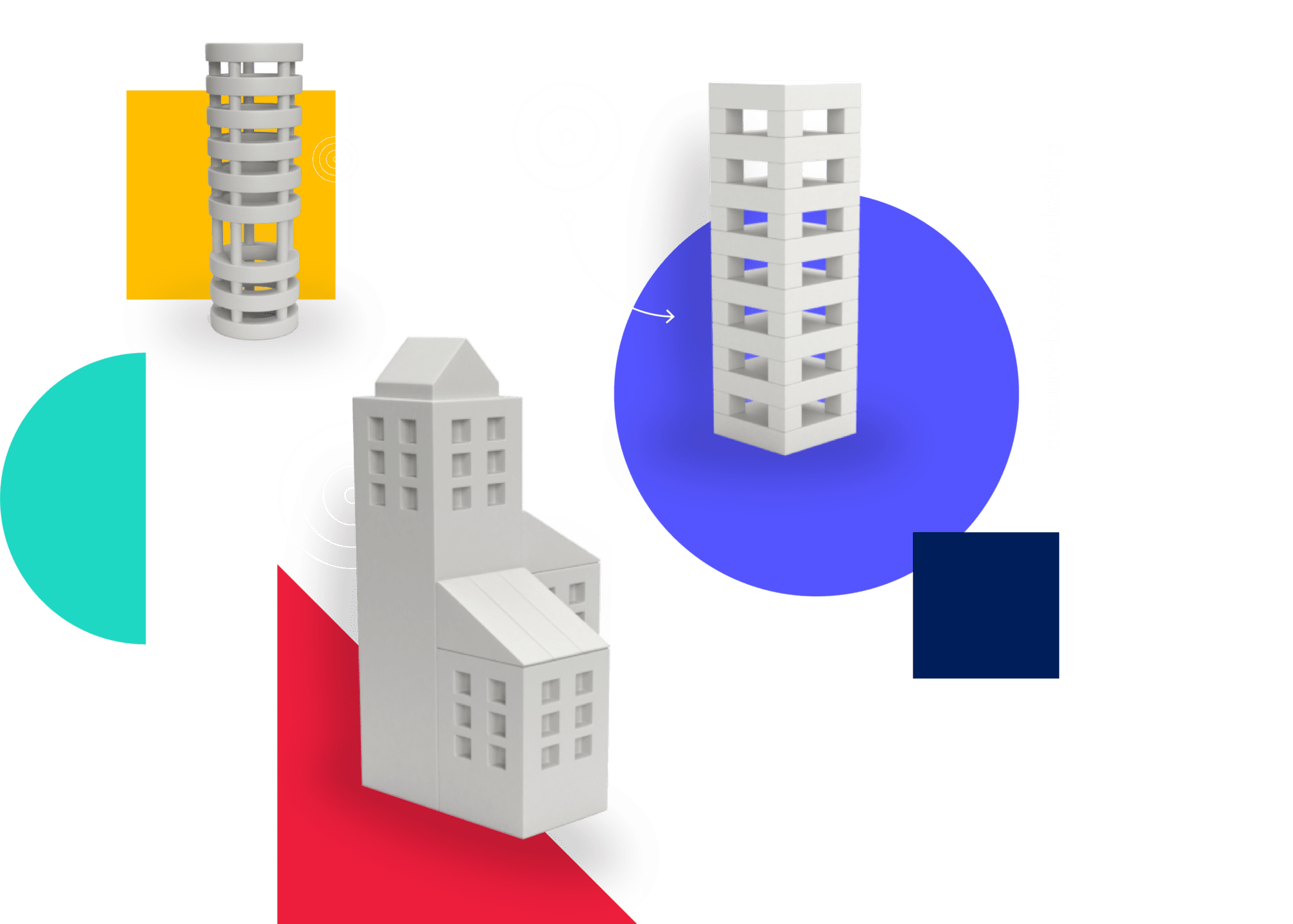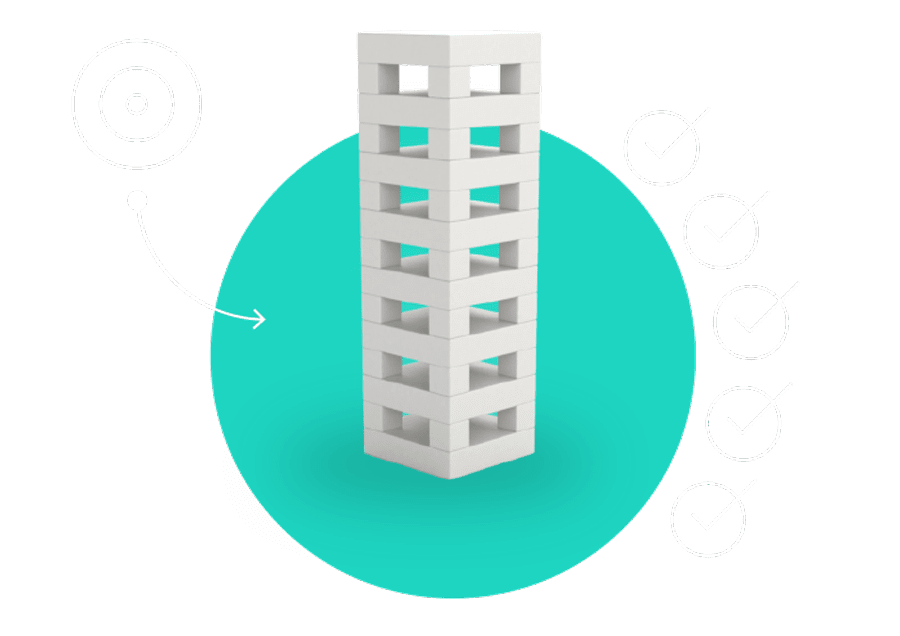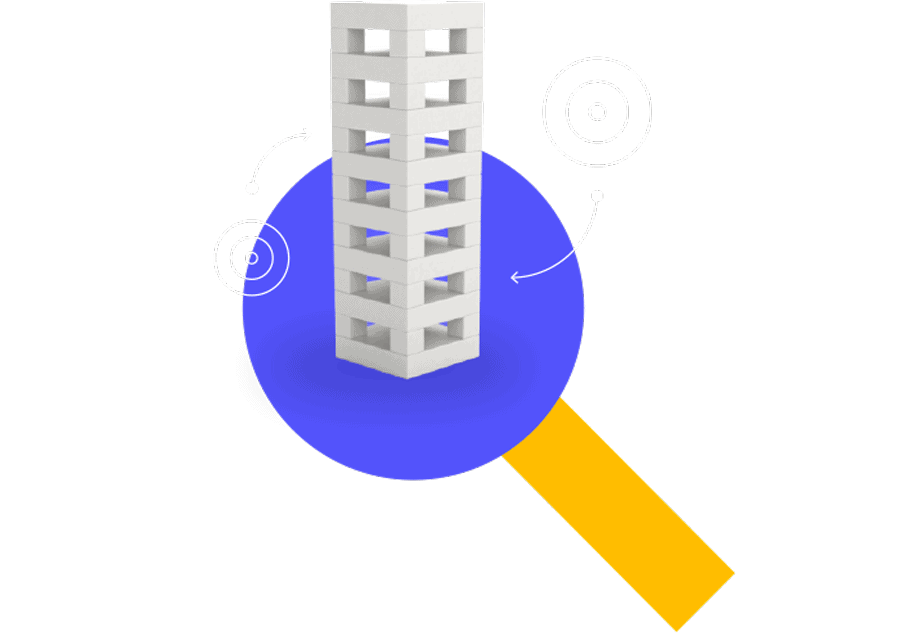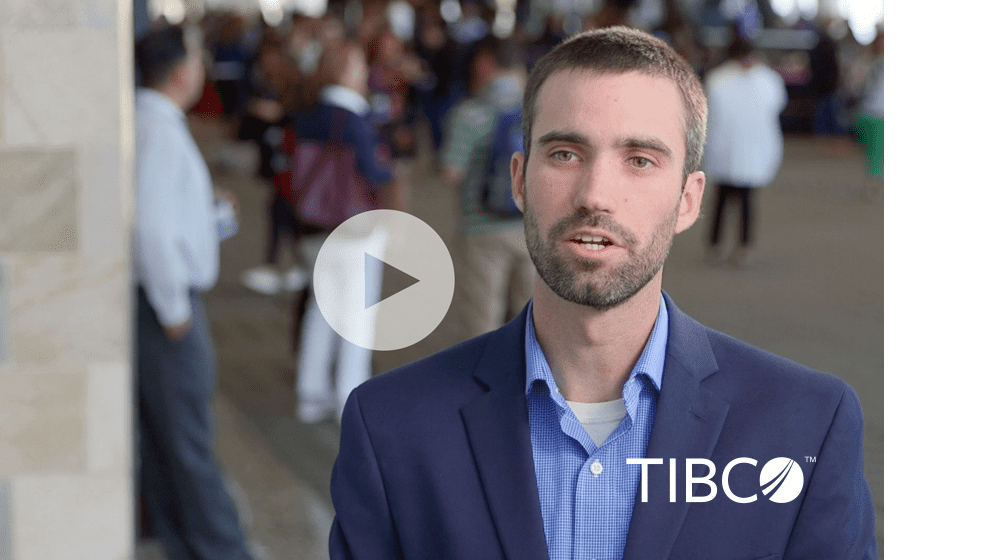Better Account-Based Marketing
Everything you need to know about implementing a personalized ABM program

What is ABM?
Simply put, account-based marketing (ABM) means focusing efforts on accounts that will bring the most value to your brand over the course of your relationship. More than just a short-lived campaign, the best ABM programs bring sales and marketing together to identify your ideal customers, and provide customized content experiences that increase engagement and revenues. And getting started is easier than you might think.
45% of marketers say ABM delivers more than double the ROI of other programs
 Why most ABM strategies don’t work
Why most ABM strategies don’t work
Today’s ABM marketing strategies have two major flaws: They treat every customer the same, and they focus on the wrong outcomes like clicks and downloads. If you only look at the number of clicks on your ads or website, and send everyone to the same content, you’re missing important cues around buying interest and intent.
The best way to learn more about both is to embrace account-based content marketing, which means understanding how your target accounts consume content. By knowing exactly how much time someone spent reading your white paper or watching your video, you can find out which content engages them most. Then, based on those preferences, develop a personalized experience that serves up additional content to move them through the funnel faster.
Find out more. Read The New Metrics For ABM >
Account first. Marketing second
When it comes to ABM, it’s important to start with the A (account) first, rather than the M (marketing). The best marketing campaigns in the world won’t do any good if the audience isn’t likely to buy. When it comes to getting the ‘A’ right, it’s just as important for marketing to get involved as it is for sales.
Sales often names target accounts based on geography or name recognition alone. To improve target account selection, marketers must team up with sales to evaluate the performance of those target accounts and ensure they are also the ones that represent the highest potential annual contract value (ACV) and value for the company.
The first step to choosing your best accounts is developing your ideal customer profile (ICP). ICP criteria defines the firmographic, geographic, and psychographic characters of the customers that represent the most potential value. Once you have a clear idea of your ICP accounts, you can work with sales to develop a standard process for handling those accounts to ensure they’re covered in the way they should be. Marketing can help support the process with collateral like talk tracks, direct mail campaigns, and case studies, to name some examples.
Find out more. Read 5 Lessons Learned From Rolling Out An ABM Program >
Personalizing experiences:
One of your biggest ABM challenges
 If you struggle with how to personalize content experiences for each person in your key accounts, you’re not alone. In fact, ITSMA says that personalizing marketing content to target accounts is the number two concern of marketers. Gathering data to track program results is number one.
If you struggle with how to personalize content experiences for each person in your key accounts, you’re not alone. In fact, ITSMA says that personalizing marketing content to target accounts is the number two concern of marketers. Gathering data to track program results is number one.
To get this right, it’s important to change your perception of what personalization really is. If you think personalization means changing out a customer logo every time you send out a communication, or creating 75 different versions of the same article to send to each of your key accounts, it can be a scary proposition.
7
The average number of people on a B2B buying committee
10.4
The average number of content pieces customers consume before purchasing
Sources: Harvard Business Review, Think With Google
Instead, the best way to personalize content for your ABM accounts is to serve up only the most relevant content needed for that point in their journey, and let them binge as they please. That way, you can track their content consumption and learn things like the topics they’re most interested in and the content types that resonate the most. Then, offer them their next course of action by recommending the next best piece of content.
Getting personalization right means gaining better insight into how customers consume content in terms of time spent. Focussing on consumption data — instead of vanity metrics like clicks — tells you what’s resonating with your audience at different stages of their buying journey so you can provide more of what they want. Offering highly relevant, barrier-free, and seamless content experiences is what ABM personalization is all about. Take it a step further by automating your recommendations using AI, which helps personalize experiences at scale allowing you to reach more of your target accounts, with less manual work.
Find out more. Read How To Personalize The ABM Content Experience At Scale >
Account-based marketing best practices
Having implemented ABM here at PathFactory we’ve learned a lesson or six along the way. Here are some of our top account-based marketing tips for those of you doing the same.

-
Put processes before programs
Instead of diving right in and starting a new ABM personalization campaign, first plan out how ABM practices will fit into your current marketing strategies. Will you start with an “ABM Light” approach — sending the same campaigns to target and non-target accounts? Or will you go all-in on ABM? Will sales or marketing (or both) define and evaluate target accounts? And how will those accounts be covered on a regular basis?
-
Clarify how you define sales readiness
The ultimate goal of marketing is to educate buyers so they’re prepared to talk with sales. Much of this education is conducted through content. But if sales rejects leads, marketers haven’t done their job. The key is to focus on the quality of interactions like content consumption to uncover genuine interest and intent, instead of just counting clicks.
-
Work closely with sales to develop your ICP
Bring together a variety of customer data — including firmographics and psychographics — to create your ideal customer profile (ICP). You can do this by analyzing a cohort of current and past customers, as well as lost opportunities, to uncover the attributes shared by those most likely to provide value to your company. Working closely with sales ensures alignment and buy-in.
-
Enable your buyers to buy
Netflix and Amazon aren’t novelties anymore, they’re status quo. Consumers have come to expect these on-demand, simple buying experiences. With access to content and products when and where they want, B2B buyers expect the same. Instead of serving up single pieces of content on your own schedule, give consumers all the curated content they crave so they’ll engage more and move closer to purchase.
-
Empower your sales team
To make sure your sales team engages target accounts in the way you expect, keep the lines of communication open. Send alerts when key accounts reach a threshold of content engagement, build talk tracks and cadences for key accounts, and frequently check in to see if they need additional support to reach your ABM goals
-
Automate with AI
B2B buying committees are growing, and with that a growing number of preferences and interests your content must satisfy. Serving up personalized content to meet these growing demands is a lot for any one person or group of people to handle with limited time and resources. Automation using AI helps you personalize the buying experience at scale with intelligent content recommendations made based on buyer behavior.
How to build an agile ABM strategy
There’s no shortage of ABM tactics and approaches from which to choose, but practicing agile ABM is essential, especially if you have a small team. An agile approach keeps things fast and lean by focussing on small chunks of your ABM program at a time, iterating quickly, and moving on to the next stage. An agile ABM program is an opportunity for continuous learning and improvement.
You can get started with agile ABM by following these five steps:


Define your target options
Your target accounts are the fastest path to annual recurring revenue (ARR) and advocacy, so you need to be sure they’re spot on. To give your sales team a better chance at success, analyze your current accounts, create your ideal customer profile (ICP), gather your desired attributes, assign salespeople to your target accounts, and provide a detailed plan to cover them.

Use existing content in initial ABM campaign
We call this ABM Light. It means getting your feet wet with ABM by simply delivering your existing campaigns to your target audience. When the PathFactory team tried this, we saw higher lead conversion and up to 2X higher ACV.

Tighten your targets.
Conduct ICP scoring and narrow down your target accounts based on attributes that match those of your most valuable customers. Use engagement data to further personalize your content experiences for these target accounts.

Focus on selling
If you’re not seeing success with your ABM program, take a closer look at your sales processes and revise if necessary. This might mean putting less emphasis on or even doing away with standard processes like geographic territories and mid-market/enterprise BDRs.

Crank up your ABM personalization
With everything else in place, the time is right to start developing messaging and campaigns specifically for your target accounts. Focus on specific problems that certain audience segments are having, and build your ABM content around those. Send your visitors to customized content experiences, like a PathFactory Content Track, so you can be sure they’re getting what they need to move along the funnel.
What ABM personalization looks like in the real world
If you want to learn from some of the best account-based marketing examples out there, look no further than our own PathFactory customers.

ABM success, without a dedicated team
TIBCO software proves you don’t need a dedicated ABM team to provide personalized content experiences at scale. With PathFactory as part of their tech stack, the TIBCO marketing team:
-
Delivered 30 personalized Content Tracks to 760 target accounts
-
Launched 24 ABM campaigns in their first year
-
Increased sales and marketing alignment in the account selection process
Goodbye gated content.
Hello custom experiences.
By switching to an ABM model, and replacing gated landing pages with custom Content Tracks, Invoca increased its average deal size by $70K and tripled engagement.
“Implementing PathFactory has completely changed the way we engage our target accounts. That ability to create account-specific content experiences has also greatly improved sales and marketing alignment.”
Ari Echt
Director of ABM
Invoca



